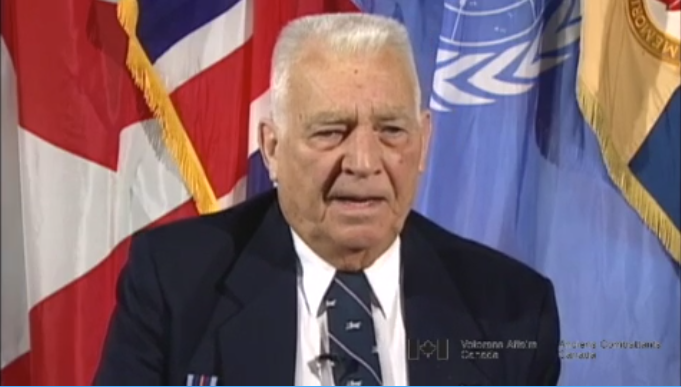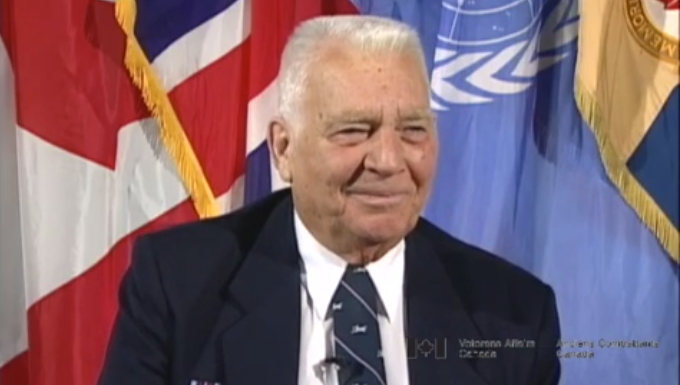I flew in the Halifaxes, they actually dropped more bombs
than the Lancaster. The Lancaster was later being used
and I think most people think the Lancaster was a better plane.
We had to learn both the gun turrets of the Halifax
and the Lancaster. I was much happier with the gun turret
of the Halifax than the Lancaster.
The control was like a fighter pilot’s control. You move the
control to the right, the turret, the gun’s turret will turn to
the right, hold it back the guns went up and the firing button
was right on that same control. We were really sitting pretty
well in the open. Many gunners cut the perspex out of the
turret because it was hard to clean it perfectly. The least
speck might make you think there was a fighter out there.
So we cut that out, so you’re looking right at the sky.
The main thing was to keep your eyes open all the time and
search the sky in every direction continuously searching the
sky, and of course if you were attacked, you were suppose
to know the type of plane and the distance by our sight was
a ring sight and if you knew the plane you knew how far
away it was. Our guns were only good for about 300 yards
whereas the fighter pilots had bigger guns and they were
good at 500 yards. They figured if they could get the
tail gunner, they could get the plane. But some flew underneath
where you couldn’t see them. If they could get underneath,
they couldn’t see ya, and come up and shoot, shoot from the belly
of the plane. They would blow up the bombs, if you still
had bombs on, so that would be the end of the whole crew.
And, of course, gunners would exchange positions if necessary.
The tail was more important than the mid upper gunner if one
happened to be hurt, but I never did get out of the turret
on 36 missions from the time I got in
until the time we landed and parked.
Some gunners thought when they crossed the channel at our
time in the war that it was safe enough to get out of the
turret and in the plane, have a smoke or go to the bathroom.
But the 14th of March, just before I finished my tour, the
17th I think, German fighters followed us back in right to
our base, bases I should say and shot down twenty bombers
right over our territory. It really bothered me that gunners
would get out of their plane when they crossed the channel
back and they’d get shot down so innocently.
I thought that was a terrible thing. Another hour or so,
and the plane could have saved the crew of seven.
It would have saved a lot of sadness back in Canada.





